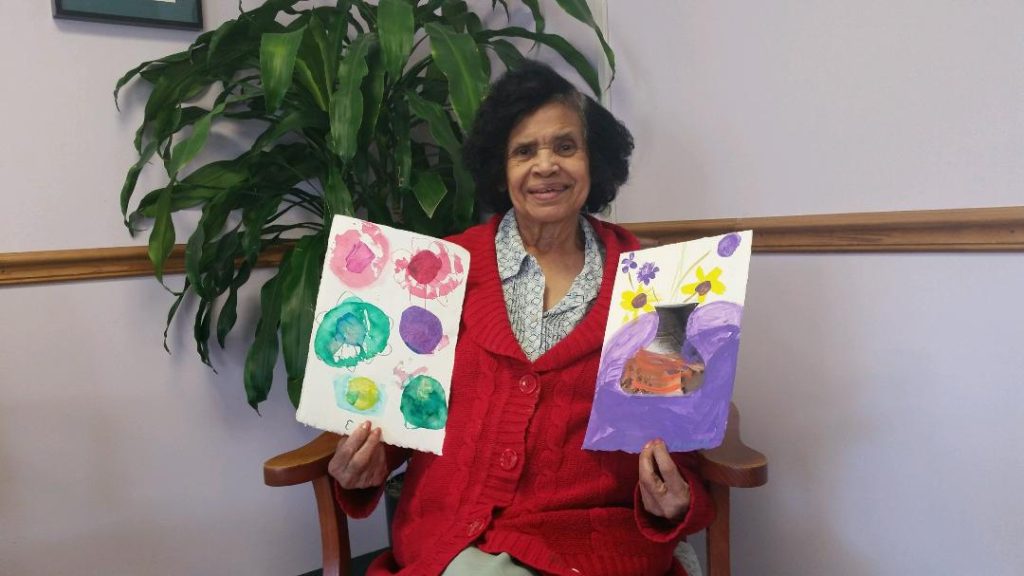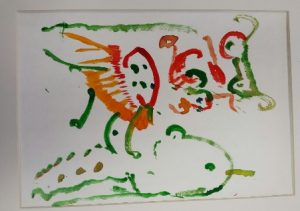Albert Einstein said, “Imagination is more important than knowledge.”
Not all will agree with that concept. Yet many caregivers, professional and personal, who work tirelessly and lovingly with those who have Alzheimer’s disease and related dementia (ADRD) may understand the theory behind those words.
When traditional modes of communication break down, it can be challenging to engage or connect with a person who has ADRD. Verbal ability may decline, creating a need to find additional methods to communicate beyond words. Creativity and imagination are great tools to inspire and engage persons with ADRD.
Memories in the Making® sponsored by the Alzheimer’s Association is one such activity. Under the guidance of an artist facilitator, participants are offered a means of self-expression through the process of painting and drawing. In this program, a person with diminished verbal and organizational skills can communicate using paints or pencil by recreating a memory on paper or canvas.
Lindsey Kamp, lead facilitator at the Mercy Health DaySTAE program in Cincinnati relies on the arts to help connect and offer successful in-the-moment experiences to those who attend the dementia program.
Lindsey says, “Memories in the Making provides an opportunity to use artwork to share their feelings and tell their story.” Participants enjoy the weekly session creating new art work. Lindsey says, “Memories in the Making unites those with ADRD in a socially artistic way.”
Elaine, a DaySTAE participant who enjoys the art program says, “We just paint what’s in our heart, and sometimes it turns out pretty good.”
The original art work also helps tell another story. At a time when it is difficult for family to grasp the deterioration of their loved one, sharing the art work has helped some families understand the decline. Grouping several art pieces together from the same artist over a period of time may show an undeniable decline in cognitive ability. Artwork may initially be detailed and colorful, then become abstract, to finally using single lines or dots in one color.
The DaySTAE program honors artists by displaying original artwork professionally framed throughout the facility. Storyboards are then created to initiate dialogue about Alzheimer’s disease and also share the belief that persons with Alzheimer’s disease still have potential to create and add value to the world.
–Amy Kruep
DaySTAE program creator
Will I Be Next? Sound/Grip


